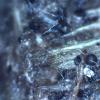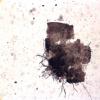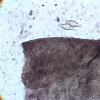
12-01-2026 22:02
Ethan CrensonHello all, I am hoping someone will have some ins

11-01-2026 20:35
Hello.A very tiny pyrenomycete sprouting sparsely

12-01-2026 05:24
 Danny Newman
Danny Newman
Cyathicula coronata on Urtica dioicaCataloochee Di

15-12-2025 11:49
 Danny Newman
Danny Newman
ITS sequences from the following two collections B

09-01-2026 17:41
Arnold BüschlenHallo, F. dilatata wird von vielen Bryoparasiten

10-01-2026 20:00
Tom SchrierHi all,We found picnidia on Protoparmeliopsis mur

07-01-2026 22:22
 Danny Newman
Danny Newman
Tatraea sp. on indet. hardwood The Swag, Great Sm

10-01-2026 01:18
 Danny Newman
Danny Newman
cf. Neovaginatispora fuckelii on indet. shrub Pre

07-01-2026 10:24
 Danny Newman
Danny Newman
Pezicula sp. on indet. hardwood Appalachian Highl

09-01-2026 10:08
 Blasco Rafael
Blasco Rafael
Hola, en el mismo habitat que la anteriorRetamaDia
Perithecia on Horse Dung
Malcolm Greaves,
28-11-2018 21:26
This perethecia c.25mm was on horse dung. The only "spores" that I could find were these elongated septate and tapering ones 43 um long. The could be contamination from outside but if not they are fairly distinctive.
Can anyone help.
Thanks
Mal
David Malloch,
02-12-2018 01:48

Re : Perithecia on Horse Dung
Hello Malcolm,
The perithecia (or cleistothecia) are probably not related to the two spores in your last photo. These are conidia of one of the nematode-trapping hyphomycetes, probably either Candelabrella or Monacrosporium. Both are now known to be anamorphs of Orbiliaceae.
David
The perithecia (or cleistothecia) are probably not related to the two spores in your last photo. These are conidia of one of the nematode-trapping hyphomycetes, probably either Candelabrella or Monacrosporium. Both are now known to be anamorphs of Orbiliaceae.
David
Malcolm Greaves,
04-12-2018 11:43
Re : Perithecia on Horse Dung
Thanks David
Looking at your suggestions and papers provided by Chris Yeates (thanks again Chris) the conidia look to be close to Dactylella probably heptameres.
Mal
No other cleistothecia have developed


